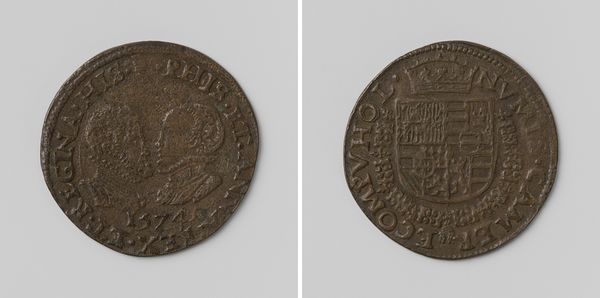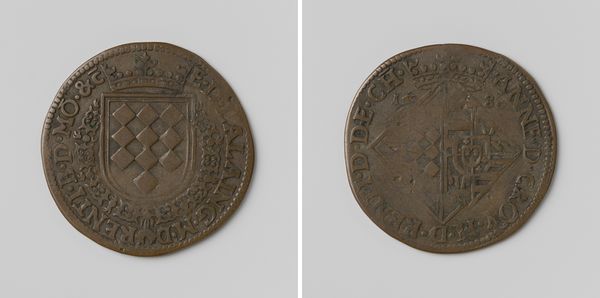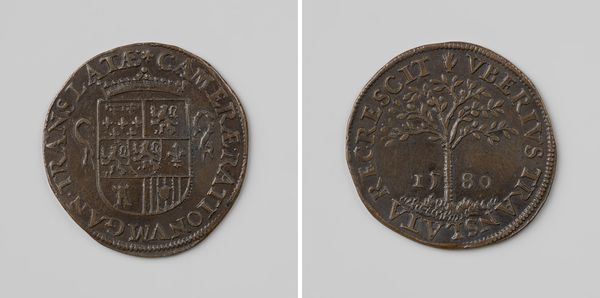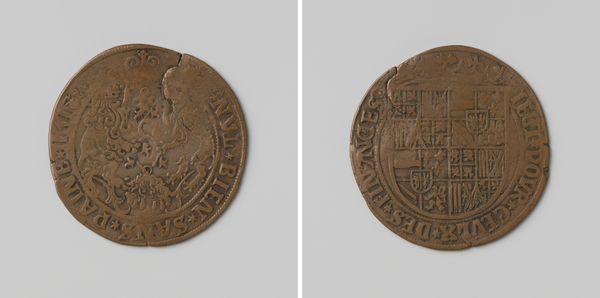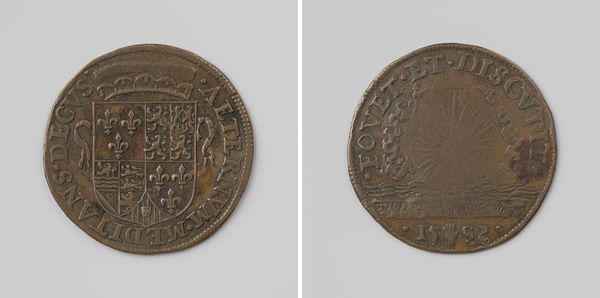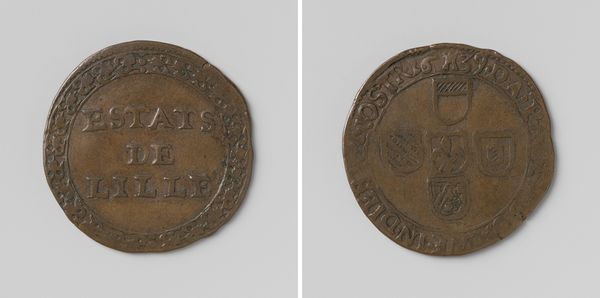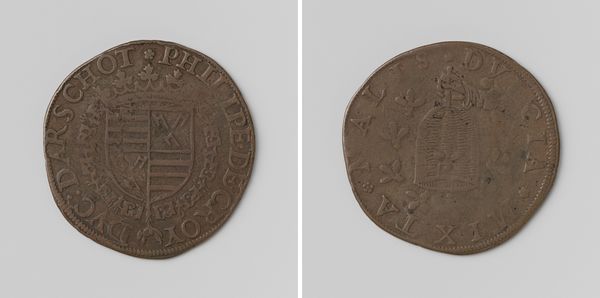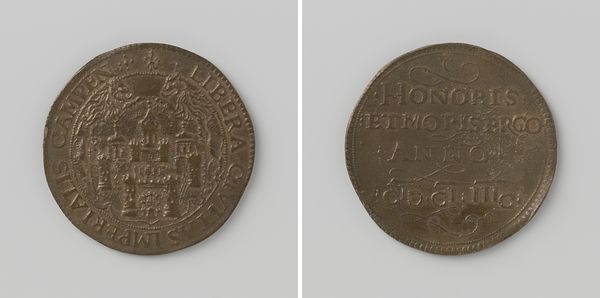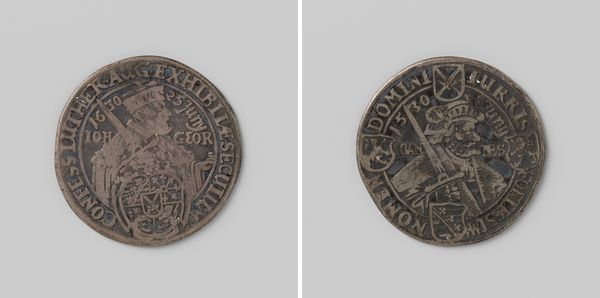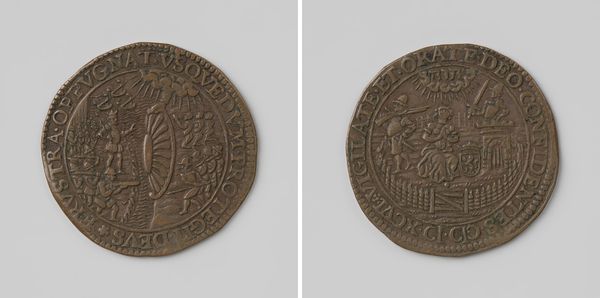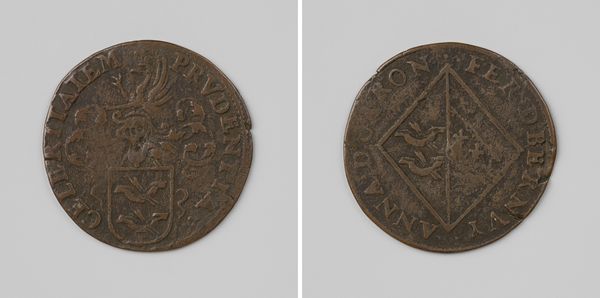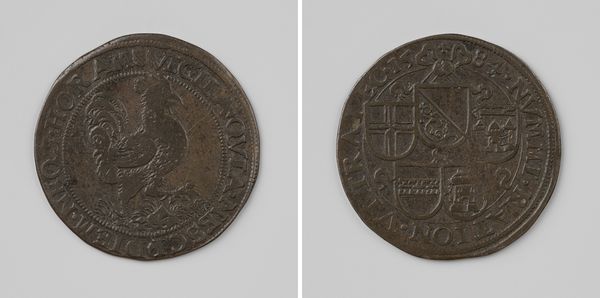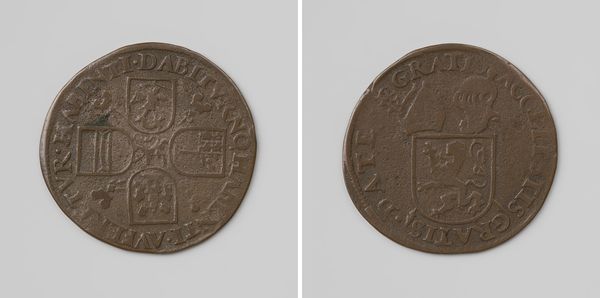
Willem II, hertog van Gulik en Kleef, rekenpenning van de kanselarij van Kleef 1582
0:00
0:00
carving, print, metal, sculpture, engraving
#
medieval
#
carving
# print
#
metal
#
sculpture
#
11_renaissance
#
sculpture
#
carved
#
engraving
Dimensions: diameter 2.8 cm, weight 4.52 gr
Copyright: Rijks Museum: Open Domain
Editor: This is a bronze medal from 1582, titled "Willem II, Duke of Gulik and Cleve, reckoning piece from the Chancellery of Cleve." It’s quite small, dominated by text and heraldry. What stories do you think this object has to tell us? Curator: This medal acts as a potent symbol of power and identity within the tumultuous political landscape of the late 16th century. Consider its creation – 1582. This was a period defined by religious conflict and shifting alliances, where the identities and allegiances were constantly negotiated and performed. Medals like these were not simply decorative, but were strategic tools in constructing and disseminating authority. Who do you think it spoke to? Editor: Presumably people connected with Willem II and his Chancellery? What was its function, practically speaking? Curator: Exactly. Functionally, as the name says, it was a ‘reckoning piece’ likely used for accounting purposes within the Chancellery. However, look closely at the heraldry – that elaborate crest speaks volumes. It performs a carefully constructed image of power and legitimacy. And what does that crest invoke? Editor: Authority and family, tradition... But it seems very exclusive. Curator: Precisely. While seemingly a functional object, it reinforces an exclusionary system of power, speaking to the entrenched social hierarchies of the time. Who benefits from the narratives being presented, and whose stories are conspicuously absent? Think about the labor and resources required to produce even a seemingly simple object. These things matter. Editor: I never thought about accounting tools in this light. So even a seemingly mundane object like this medal participates in a broader political discourse. Curator: Absolutely! Examining these objects critically allows us to peel back layers of history, revealing complex negotiations of power, identity, and social structures. It makes you wonder how even today our everyday objects create narratives of their own.
Comments
No comments
Be the first to comment and join the conversation on the ultimate creative platform.
